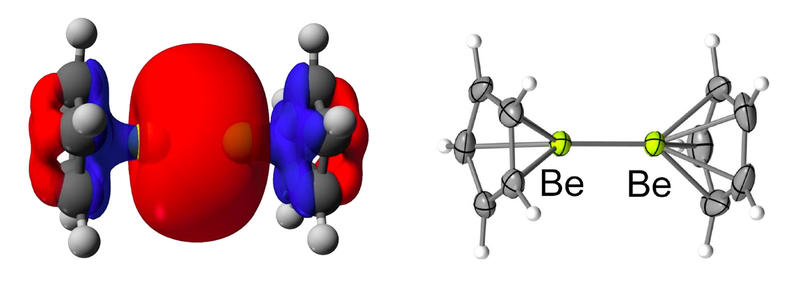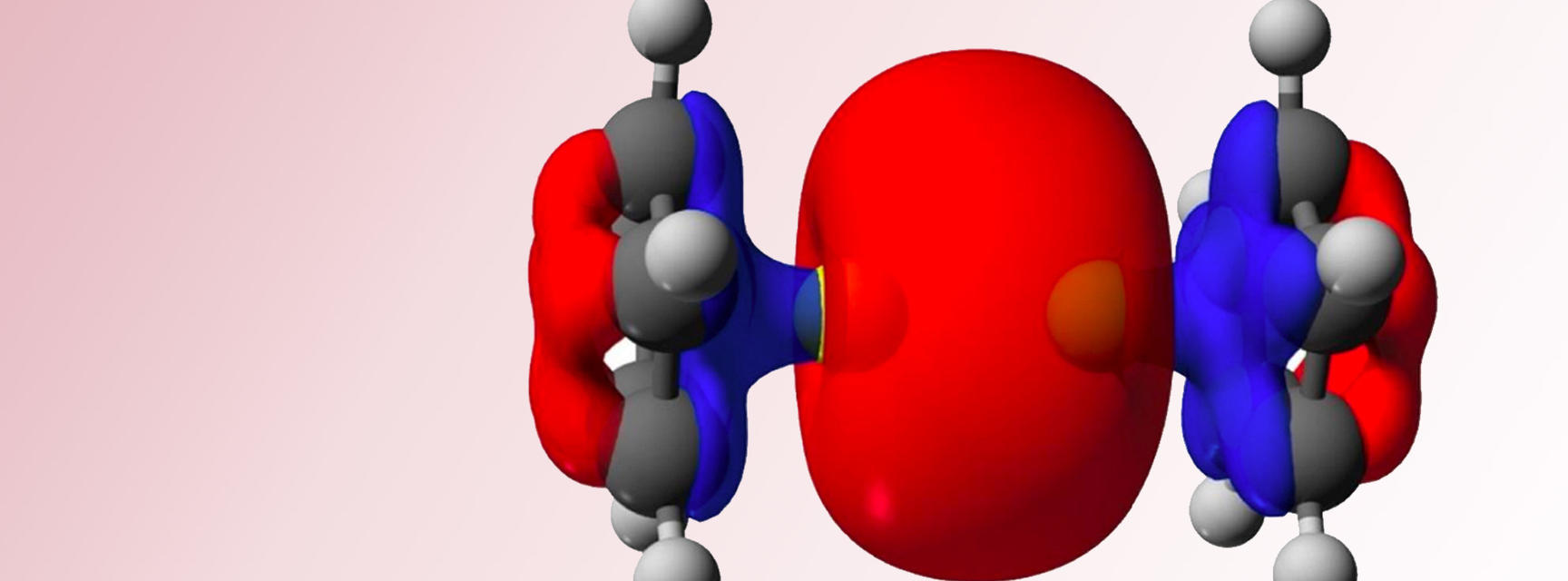First example of a stable beryllium-beryllium bond synthesised
In a study published today in Science, chemists from the University of Oxford explain how they have prepared the first stable compound containing a chemical bond between two beryllium atoms. The compound the Oxford team has synthesised, diberyllocene, is stable both as a solid and a vapour, and the Be–Be bond has been unambiguously established using X-ray crystallography.
The chemistries of the lightest elements – those of the first and second row of the Periodic Table (hydrogen through neon) form the basis for fundamental models of chemical bonding and reactivity. These models are used to explain the chemical properties of the world around us, such as how catalysts work and how biological systems like our bodies function, and to make predictions about hitherto unknown compounds and materials. The development of fundamental new compounds of these lighter elements (such as beryllium) is critical for testing and refining these models of chemical bonding.
Beryllium, element number four in the Periodic Table, is the second lightest metal, but its chemistry is the least well-developed of all non-radioactive elements. Chemists and physicists have tried to synthesize Be–Be bonds for more than 100 years, but they have remained elusive. Only recently have fleeting, highly unstable Be–Be interactions between beryllium atoms in the gas phase been detected.

Structural models of the diberyllocene molecule show the unambigous Be–Be bond.
The molecule the Oxford team have prepared in this study, diberyllocene, has itself been the subject of many experimental and theoretical studies over the past fifty years. This is the first time it has been synthesised, in a great leap forward in main group chemistry. The fact that it has taken so long to validate such a fundamental bonding interaction (a missing link in the element–element bonds in the second row of the Periodic table) had led chemists to question whether it was even possible, despite theoretical support for its feasibility.
Dr Josef Boronski, the lead author of the study, says:
As beryllium is such a light element, its chemistry is idiosyncratic and often incomparable to that of other metals. It has been such a privilege to get the first glimpse of an unseen facet of this element. There have been numerous unsuccessful attempts to prepare diberyllocene, but given beryllium’s capacity to form highly covalent bonds we’re finding that the beryllium-beryllium bond is rather strong. However, diberyllocene is still an extremely reactive molecule and I’m sure a thorough exploration of its chemistry will yield many surprising results.
The team have shown that diberyllocene is stable in the solid state and (when heated) in the vapour phase. Given the many unsuccessful previous attempts to prepare beryllium-beryllium bonds, the stability of the compound itself is remarkable and means that it can be studied by a range of analytical techniques. Diberyllocene was also shown to act as a reductant that can be used to synthesise beryllium–metal bonds.
The Oxford team now hope to further investigate the fundamental chemical reactivity of the beryllium-beryllium bond, including using it to generate new beryllium-element bonded compounds, and to explore the properties of such materials. This will allow them to test our current understanding of chemical bonding and reactivity for the lightest elements and metals.
Professor Simon Aldridge says:
Studies of fundamental compounds of this type might not always be fashionable these days, but they are critical to our understanding of key underpinning concepts in chemical bonding and reactivity. In this case, the synthesis of the lightest metal-metal bond relies on the use of the right beryllium-containing starting material, and an unusually effective magnesium reductant.
You can read more about the study in Science.





